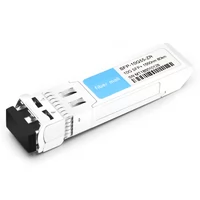Due to the rapid progress in modern networking, the quest for increased data transmission rates and dependable connectivity is continuously growing. The Cisco SFP-10G-ZR optical transceiver module seeks to meet these requirements by efficiently supporting single-mode fiber (SMF) applications operating at a wavelength of 1550nm. The purpose of this article is to present the technical characteristics, uses, and benefits of the SFP-10G-ZR to help the readers appreciate its significance in the working of the network infrastructure. In addition, factors such as installation aspects, what other equipment the device can be used with, and maintenance of the system to achieve maximum efficiency in various operating conditions will also be covered.
Table of Contents
ToggleWhat is the Cisco SFP-10G-ZR Transceiver?
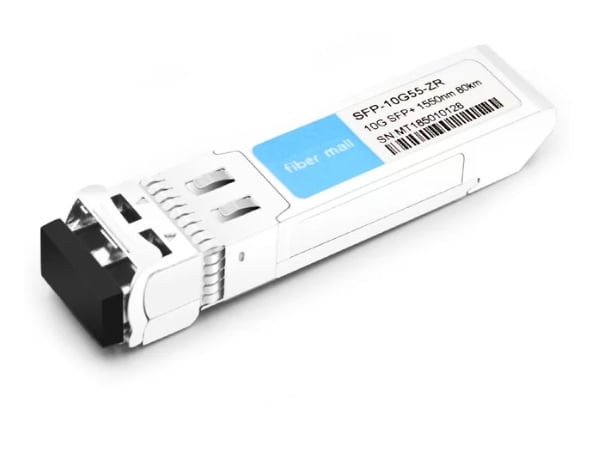
Key Features of the Cisco SFP-10G-ZR
The Cisco SFP-10G-ZR is a small form factor pluggable optical transceiver with many high-speed network features. Some of the highlights are:
- Wavelength: A wavelength of 1550nm is emitted, which is suitable for single-mode fiber with minimum signal loss at higher lengths.
- Distance: Standard single-mode fiber (SMF) used to transmit data can transmit data over 80km (49.5 miles), making a long-distance network connection possible.
- Data Rate: IEEE 802.3ae endorses 10 Gbps as the maximum data rate for 10 G Ethernet applications.
- Connector Type: An LC duplex connector is interfaced effectively into the fiber optic cables.
- Form Factor: This is a compact SFP form factor that is hot-swappable with many types of networking equipment.
- Temperature Range: This transceiver unit can operate efficiently at temperatures between 0 and 70 degrees centigrade.
Together, they improve the transceiver’s efficiency and functionality, and hence, high-speed and safe data transfer is achievable in virtually any network.
How Does the SFP-10G-ZR Compare to Other 10G Transceiver Modules?
The Cisco SFP-10G-ZR transceivers have several unique features, especially in operation and deployment, compared to other 10G transceiver modules. This contrasts with most standard 10G transceivers, especially the SFP-10G-SR, which have working distances of under 300 meters. However, the SFP-10G-ZR supports long-range connectivity up to 80 km over single-mode fiber. Such characteristics make it worthwhile to connect data centers and metropolitan areas.
Also, the SFP-10G-ZR uses a wavelength of 1550nm, which is advantageous since a longer wavelength is preferable over shorter wavelengths used by transceivers for multimode fibers. In addition, its small form factor Pluggable (SFP) architectural design facilitates quick add-ons to the present networking devices, thus providing cost-effective growth for networks. Overall, the SFP-10G-ZR is preferable for long-haul high-speed networking due to its ability to perform well over long distances and diversity.
Where Can the Cisco SFP-10G-ZR Be Used?
The Cisco SFP-10G-ZR optical transceiver is appropriate for high-speed connectivity over long distances. Its typical applications include:
- Data Centers: Providing inter-server and storage system connections over the distance to improve the exchange of data and the system’s overall performance.
- Metropolitan Area Networks (MAN): Linking many units that require several internal or outward enterprise networking locations.
- Wide Area Network (WAN): Connecting remote geographical locations or branch offices to a central site, usually a data center, and experiencing minimal signal loss or none within long distances.
- In telecommunications, this allows service providers to extend high-speed internet and communication services over longer distances without sacrificing reliability.
In such situations, the compatibility of the SFP-10G-ZR brings about satisfactory data transfer and network performance.
How to Ensure Compatibility with Your Network?
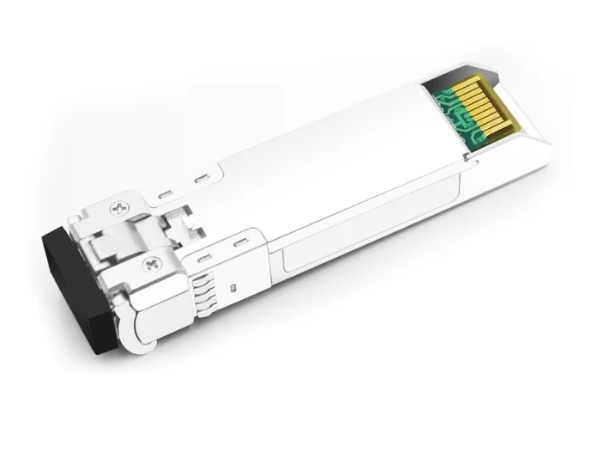
Understanding SMF and 1550nm Wavelength
A single-mode fiber (SMF) is an optical fiber engineered for precision purposes. Light is transmitted with no intersectional distortion along a fiber; this enhances its use in communication over longer distances. SMF usually makes use of a core diameter of 8 to 10 micrometers, which enables the propagation of only one mode of light and, hence, lesser signal loss and interference as compared to the multimode fibers. Due to its vital attributes concerning a reduced attenuation rate over long distance transmissions, the 1550nm wavelength is often standard in SMF applications. In standard single-mode fiber, this particular wavelength of 1550nm is in the low-loss window of the fiber, therefore enabling a very high data capacity even over long distances, typically more than 80 kilometers, without alternating current regeneration. Such approaches render SMF and the 1550nm wavelength compatible with telecommunication and high-speed data networking contexts with good connectivity and data speed.
SFP-10G-ZR Compatible Devices
The SFP-10G-ZR transceiver module has been designed to work with other equipment and is aimed at 10G Ethernet over single-mode fiber at the wavelength of 1550 nm. Some of the critical device categories include:
- Cisco Routers and Switches: Most Cisco models, for instance, use the construction of SFP-10G-ZR, which makes it possible to connect these devices to an existing system without difficulties.
- Juniper Networks Equipment: The SFP-10G-ZR is supported in some Juniper switches, such as the EX and QM series, which support high connectivity.
- Arista Networks Switches: A number of Arista switches are equipped with an SFP-10G-ZR module, which allows for high-capacity data transfer and improves the network system’s efficiency.
However, it is essential to ensure that such information regarding the model type and the appropriate firmware is cross-checked with the equipment before its usage.
Common Compatibility Issues and Solutions
While designing network systems utilizing the SFP-10G-ZR transceiver module, connecting the module to network devices may cause some of the following common problems:
- Extremely Important Firmware Version Mismatch: Most new modules require firmware modification to support new devices. Make sure that the device is up to date before any installation. Information on improvements in compatibility can be found easily by checking the manufacturer’s site.
- Unsupported Transceiver and Device Combinations: Most devices do not support third-party transceivers. Ensure that the network device model states that the SFP-10G-ZR is indeed supported. You can ascertain this by looking at vendor documentation or contacting technical support.
- Environmental Factors: Installation conditions, such as temperature and humidity, have been noted to hamper the SFP-10G-ZR’s performance. Ensure that the working conditions are within the range stated in the datasheet, or else the device may sustain poor performance or completely break down.
Network engineers can reduce the chances of default occurrence and introduce SFP-10G-ZR modules in their environments without operational interruption by dealing with these issues early and with excellent research and preparation.
Installation and Setup of the Cisco SFP-10G-ZR
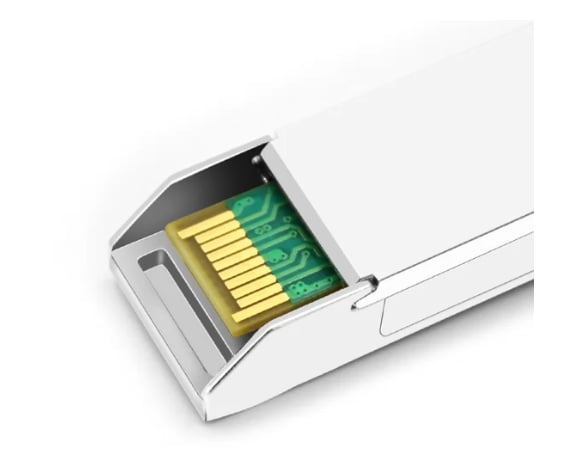
Step-by-Step Installation Guide
- Gather Necessary Tools and Equipment: It is a good idea to first get all the necessary tools, such as a compatible transceiver (SFP-10G-ZR), a clean room wipe for module handling, and sometimes even a glove, to avoid getting oil on the optical ports.
- Power Down the Network Device: Because the SFP-10G-ZR transceiver installation procedure may cause electrical or connection malfunctions, make sure that the transceiver is housed in a powered-down network device. This step is important to avoid damaging the device or the device transceiver module.
- Locate the SFP Port: Find the SFP port on your network device, which is usually positioned at the back or on the side. This is where the module SFP-10G-ZR will be inserted.
- Insert the SFP-10G-ZR Transceiver: Move the transceiver to the SFP port in alignment. Insert the module between 30 and 45 degrees and gently but firmly push it vertically until an audible click is heard. Do not lever the module, as this could lead to possible breakage.
- Reconnect the Network Device: Replace the cover plug on the transceiver and put the network device back in the power supply. Next, allow it to complete the booting process and add the new component recognized by the computer.
- Verify Installation: At this point, turn on the device, open the device management interface in CLI or GUI mode, and check if the SFP-10G-ZR module is detected and working correctly. Look for validation status or status logs that might indicate problems.
- Conduct a Test: Perform connectivity tests to ascertain that data transmission through the newly installed transceiver is happening as intended. Evaluate the performance metrics and check if they are in the operational range.
With the proposed approaches above, the SFP-10G-ZR transceiver can be installed and configured to interface with the network without distortion properly.
Recommended Fiber Cables and Connectors
The selection of fiber cables and connectors for the SFP-10G-ZR transceiver also depends on the compatibility, performance, and installation requirements. The recommendations made in this document have some basis on commonly accepted and the best practices in the respective industry:
- Fiber Cable Type: The SFP-10G-ZR transceiver is intended to be deployed using single-mode rather than multi-mode fiber. Chauh G.652. D and G.657. A1 single-mode fiber cable should be used since it reliably sustains iced transmission over distances of up to 80 km.
- Connector Types: Since the SFP-10G-ZR module has an LC interface, LC duplex connectors should be upheld. Such a connector is standard for high-speed data transmission with minimum signal loss.
- Quality Considerations: Fiber optic cables and connectors should be purchased from trusted sources to assure quality and durability. To prevent malfunctions during use, all components and products must comply with international requirements (ISO/IEC) on performance and longevity.
Following these recommendations, users can improve their network design and consider compatibility issues with the SFP-10G-ZR transceiver.
Configuring the Transceiver for Optimal Performance
To ensure proper performance of the SFP-10G-ZR transceiver and compliance with clauses, the following best practices are recommended:
- Transceiver Compatibility: Before proceeding with the SFP-10G-ZR transceiver, it is important to check whether it is appropriate with the current network hardware. This particularly focuses on firmware compatibility with the platform and the availability of support for 10 Gbits optical interfacing.
- Network Configuration: Reconfigure the network components and parameters according to the requirements of your envisioned application. This can include installing VLANs, configuring IP addressing, or adjusting resource allocation for Quality of service.
- Monitoring and Diagnostics: Use network management tools to manage the SFP-10G-ZR transceiver’s performance. This includes measuring the optics power level, operating temperature, and error rate, among other things. Carrying out monitoring and repair activities will assist in the early detection of problems and, therefore, control the deterioration of the data transmission.
- Firmware Updates: Whenever you seek to use the transceiver, check whether its firmware is up to date. Often, vendors update the original configuration to enhance operations or discover danger and make changes to combat it, thus improving performance.
- Environmental Considerations: Place the transceiver within the specified working temperature range and ensure adequate cooling. Placing transceivers in overheated temperature conditions is detrimental to their performance and durability.
Employing these configuration approaches, users are likely to be able to improve the efficiency and reliability of the SFP-10G-ZR transceiver as part of their network architecture.
Technical Specifications and Datasheet Insights
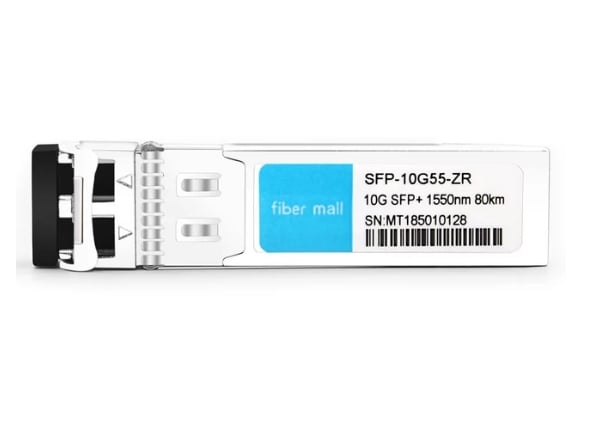
Reading the Cisco SFP-10G-ZR Datasheet
When approaching the Cisco SFP-10G-ZR datasheet, one must concentrate on the following aspects, which are usually emphasized in the literature:
- Optical Specifications: The datasheet describes some optical parameters, such as how far the transceiver can work, which is not less than 80 km on a single-mode fiber, the operational wavelength, which is 1550nm, and power alongside performance opti.
- Electrical Characteristics: It contains the amount of voltage needed, the specification of both transceivers and receivers, and their power consumption, which is very important for integrating the system into the present one.
- Compatibility and Standards Compliance: The datasheet guarantees compliance with network standards on SFP-compatible networks such as SFP+ (Small Form-Factor Pluggable Plus), interfacing with transceivers customers could integrate with network devices manufactured by Cisco and other vendors.
By going through these sections, users can determine whether the Cisco SFP-10G-ZR transceiver will be adequate for their networking requirements, taking into consideration performance and fail-safe operational conditions with high throughput data transmission.
Important Specifications: DDM, DOM, and More
Evaluating other parameters, such as Digital Diagnostics Monitoring (DDM) and Digital Optical Monitoring (DOM), is appropriate when assessing the Cisco SFP-10G-ZR transceiver. These characteristics allow for real-time telemetry of the transceiver’s operational state. DDM is used to measure temperature, supply voltage, laser bias current, and optical power from optical transceivers to assist in network management and maintenance. Likewise, DOM provides analytics data regarding operational optical link health, including measured optical power received and signal quality.
Additionally, these monitoring functions support improving fault detection and isolation techniques, thereby improving network reliability and availability. Consequently, organizations can use maintenance and replacement strategies that concern the network’s performance levels. Therefore, the plan is result-oriented and timely because timely resolutions are taken. Such an emphasis on diagnostics appropriately aids in maintaining the proper flow of data in the transmission line to cater to high-traffic situations where any disruption of the systems, however minor, entails grave consequences.
Understanding Link Lengths and Operating Temperature Range
In evaluating the Cisco SFP-10G-ZR transceiver, a thorough knowledge of link lengths and operating temperature range is crucial as it determines the performance in a networking environment. The Cisco SFP-10G-ZR specifications endorse using single-mode optical fiber and a maximum reach of up to 80 kilometers (km) under perfect conditions, promoting long-haul data transmission in several applications. The range is generally from 0°C to 70°C (32°F to 158°F), in which case this transceiver can be used in diverse environments, including data centers and telecommunication sites. Proper thermal management and compliance with all fiber cabling regulations are necessary if the transceiver’s performance is to be reached and there is fear of performance degradation that may occur with changes in temperature or long distances. Thus, these users must look into these aspects of specific deployment scenarios before fully using the strengths provided by this particular transceiver design to ensure adherence to set operational characteristics.
FAQs About the Cisco SFP-10G-ZR
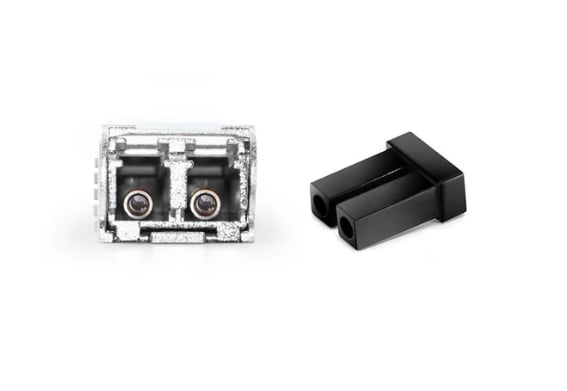
What is the Lifespan of a Cisco SFP-10G-ZR?
The lifespan of the Cisco SFP-10G-ZR transceiver is affected by its application, working conditions, and care measures undertaken. Such modules are, however, expected to perform reliably throughout 5 to 10 years in nominal conditions. However, environmental factors such as very high temperatures, high frequency of use, and mistreatment can negatively affect their lifespan. It is necessary to take health checks periodically and apply testing methods to ensure the transceiver operates strictly according to economically defined limits to increase longevity. In addition, using the transceiver within the acceptable temperature limits (0°C to 70°C) and maintaining the hygiene of the transceiver also contributed towards promoting optimal lifespan. Due to the severity of likely disruption of moving to other networks, it is advisable that physical network cables should be replaced by other traditional fan-out opportunities regularly or, e.x, good performance uncle is summarized.
Can the SFP-10G-ZR be Used with Other Brands?
The Cisco SFP-10G-ZR transceiver is meant to be inserted into the device of Cisco systems and thus falls under the family of Cisco SFP+ transceivers, but it can be used in many other brands that comply with SFP+ standards. Typically, transceivers accessible from third parties such as Finisar, Arista, and Mellanox can be used well on devices of similar protocols and configurations. Nevertheless, this will vary according to the particular model of the equipment and the firmware version that the device is utilizing at that specific moment. It is recommended that buyers read the technical specifications of their devices and the compatibility charts provided by manufacturers to increase the likelihood of reliable operation of the devices and avoid cases of network downtime.
Troubleshooting Common Issues with SFP-10G-ZR
When it comes to the SFP-10G-ZR transceiver and the issues related to it, the troubleshooting methods given below are also necessary to identify and repair the problems commonly associated with it:
- Link Failure: In case of a link failure, check if both sides are plugged in firmly, such as a cable. Look for signs of damage or dirt on the ends of the optical cables and ensure that you are operating within the proper protocols and wavelengths.
- Incompatible Equipment: Check whether the networking equipment is fully compatible with the SFP-10G-ZR module. If the transceiver and the switch/router are incompatible, try to update their firmware. Reference lists from the transceiver manufacturer can assist in confirming compatibility.
- Signal Integrity Issues: Perform a loopback test to ascertain the signals’ integrity. If the module transceiver fails the loopback test on the first attempt, replace the module. However, monitoring the error rates of the network devices can highlight poor performance issues.
- Temperature Alerts: The operating temperature of module SFP-10G-ZR should be monitored. It should be no more than 70C or no less than 0C for optimal performance. If necessary, provide cooling measures or move the equipment.
The steps to take regarding all the above will enable users to troubleshoot and maintain the SFP-10G-ZR transceivers easily, thus ensuring that they remain operational within the network and experience minimal downtime.
Reference Sources
Frequently Asked Questions (FAQs)
Q: What is the purpose of a Cisco SFP-10G-ZR?
A: The Cisco SFP-10G-ZR is a 10 g form factor single-mode fiber optical transceiver module used in data centers and other network environments. It supports Ethernet applications over an 80 km fiber length and has an operating wavelength of 1550nm.
Q: How far can the Cisco SFP-10G-ZR transmit data?
A: Cisco SFP-10G-ZR operating distance is 80km within standard single mode G.652 compliant fiber.
Q: Is the Cisco SFP-10G-ZR interchangeable with other Cisco transceivers?
A: Yes, the Cisco SFP-10G-ZR is Cisco compatible and can utilize the Cisco 10GBASE-ZR transceiver module as well as other OEM modules designed based on Cisco requirements.
Q: What sort of a connector is attached to the Cisco SFP-10G-ZR?
A: The Cisco SFP-10G-ZR fiber connector is an LC duplex for fiber optics cables.
Q: Is Cisco SFP-10G-ZR only intended to be used with Cisco equipment?
A: The Cisco SFP-10G-ZR is MSA compliant, so it can be installed in different types of equipment, such as routers and Ethernet switches of different brands. Hence, the name PCI over MSA: An over 80km link can also be supported.
Q: Is the digitized optical monitoring feature available in Cisco SFP-10G-ZR?
A: Yes, the SFP-10G-ZR transceiver from Cisco provides digital optical monitoring (D.O.M.), which provides details of the transceiver’s parameters and helps enhance the network’s performance and reliability.
Q: Is it possible to access customer reviews of the Cisco SFP-10G-ZR?
A: Yes, customer reviews of the Cisco SFP-10G-ZR are available on various sites and platforms. If you own this product, you can also write reviews and share your experiences using it.
Q: What warranty coverage is offered for the Cisco SFP-10G-ZR?
A: Generally, whenever the Cisco SFP-10G-ZR is bought from an authorized dealer, it is usually covered by a lifetime warranty, and in such cases, quite commendable support is provided for 10GBASE applications.
Q: What are the factors that will make the Cisco SFP-10G-ZR affordable?
A: The transmission optical module, the Cisco SFP-10G-ZR, is cost-effective since its high performance allows it to transmit signals as far as 80km over standard SMF. It is also used with many types of networks, therefore reducing the number of different types of transceivers.
Q: How do I check that Cisco SFP-10G-ZR conforms to my networks?
A: The SFP-10G-ZR is TAA-compliant and designed by Cisco, so it has every reason to meet any network standards that compliance entails.

